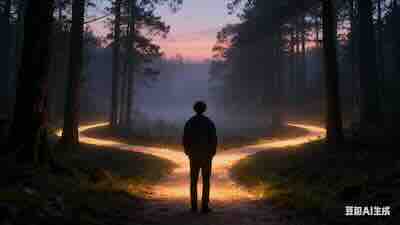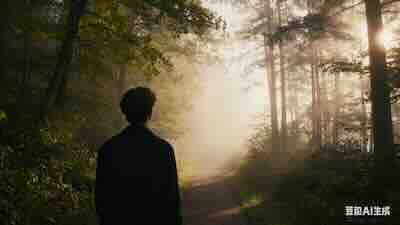"Who Am I?" - Unlocking the Riddle of Sexuality Beyond the Kinsey Scale

For decades, the primary tool for answering the question, "Who am I attracted to?" was the Kinsey Scale—a groundbreaking yet ultimately limited spectrum. But what if your experience doesn't fit neatly on a seven-point scale? What if your feelings are more complex, more fluid, more... you?
If you've ever felt like a simple label doesn't quite capture the whole picture, you are not alone. The journey to understanding your sexual orientation is a deeply personal one, and modern sexuality research offers us far more nuanced and compassionate frameworks than ever before. This article is your guide to exploring the multidimensional nature of sexuality, moving far beyond the black-and-white thinking of the past.
The Kinsey Scale: A Revolutionary First Step
First, let's give credit where it's due. When Alfred Kinsey introduced his seven-point scale in the 1940s, it was revolutionary. It shattered the rigid binary of "homosexual" and "heterosexual," introducing the idea that sexuality could exist on a continuum.
The scale ranges from 0 (exclusively heterosexual) to 6 (exclusively homosexual), with an "X" category for those with no socio-sexual contacts or reactions. For the first time, bisexuality was given a place in the scientific conversation.
Where the Scale Falls Short
However, like any pioneering model, the Kinsey Scale has its limitations. Have you ever felt that who you're attracted to emotionally is different from who you're attracted to physically? Or that your feelings have shifted over time? This is where the scale's simplicity becomes a constraint.
- It's one-dimensional: It measures attraction on a single axis, failing to distinguish between sexual acts, fantasies, and emotional connections.
- It's static: It typically captures a single point in time, offering little room for the natural evolution of desire.
- It overlooks asexuality: The "X" category was not a true representation of asexuality as an orientation.
Moving Beyond a Single Line: The Klein Grid
Imagine your sexuality not as a line, but as a mosaic. This is the conceptual leap offered by Dr. Fritz Klein with the Klein Sexual Orientation Grid (KSOG). Developed in the 1970s, it was designed to provide a more holistic and dynamic snapshot of a person's sexual orientation.
Instead of one variable, Klein proposed seven, each rated across three different points in time: the past, the present, and your ideal. This multi-layered approach provides a much richer, more personal picture.
The Seven Dimensions of the Klein Grid
Let's unpack these seven key variables. As you read them, consider how they might apply to your own life:
- Sexual Attraction: Who do you find yourself sexually drawn to?
- Sexual Behavior: Who have you actually had sexual contact with?
- Sexual Fantasies: Who are the people in your daydreams and fantasies?
- Emotional Preference: Who do you feel most deeply connected to on an emotional level?
- Social Preference: With which gender(s) do you prefer to socialize?
- Self-Identification: How do you label yourself? (e.g., heterosexual, gay, bisexual)
- Lifestyle: In what kind of community do you feel most comfortable?
The Klein Grid validates the feeling that these different facets of your life might not all point in the same direction. It honors complexity.
The Fluid Nature of Desire: Understanding Sexual Fluidity
Another groundbreaking concept is "sexual fluidity." Popularized by researcher Dr. Lisa M. Diamond, this idea acknowledges that for many people, sexual attractions and identity can and do change over time. This is not about being "confused"; it's a natural and valid human experience.
What This Means for You
- Your past does not invalidate your present. If you identified as straight for 20 years and now find yourself attracted to the same sex, your current feelings are real and valid.
- Your future is not set in stone. You have permission to grow and evolve.
- You are the ultimate authority on your own experience.
Asexuality and the A-Spectrum
A crucial part of expanding our understanding is making space for the asexual spectrum, or "a-spec." Asexuality is a sexual orientation characterized by a persistent lack of sexual attraction toward any gender. It's vital to distinguish this from celibacy (a choice) or low libido (a medical state).
The a-spectrum is diverse and includes identities like:
- Asexual: Someone who does not experience sexual attraction.
- Demisexual: Someone who only experiences sexual attraction after forming a strong emotional bond.
- Gray-asexual: Someone who identifies somewhere between asexual and allosexual, perhaps feeling attraction very rarely or weakly.
Your Unique Journey of Self-Discovery
So, where does this leave you? It leaves you in the driver's seat, equipped with a better map. Understanding models like the Klein Grid and concepts like sexual fluidity allows you to be a compassionate observer of your own inner world. It gives you the language to describe your experiences without feeling boxed in.
There is no final exam, no single "right" answer. The goal isn't to find a perfect label, but to find a comfortable, authentic way of being. If you're looking for a structured way to reflect on these different facets of your identity, a well-designed questionnaire can be a powerful tool for introspection. For a thoughtful and private way to explore your feelings, you might consider taking our Sexual Orientation Test, which is designed with this modern, multidimensional understanding in mind.
Final Thoughts: Embracing Your Own Story
Understanding your sexuality isn't something to be "solved" like a puzzle, but rather something to be lived and experienced. Moving beyond the Kinsey Scale opens up a world where complexity is normal, fluidity is valid, and self-acceptance is the ultimate goal. Your journey is uniquely yours, and every step, every question, and every realization is a vital part of the story of you.


